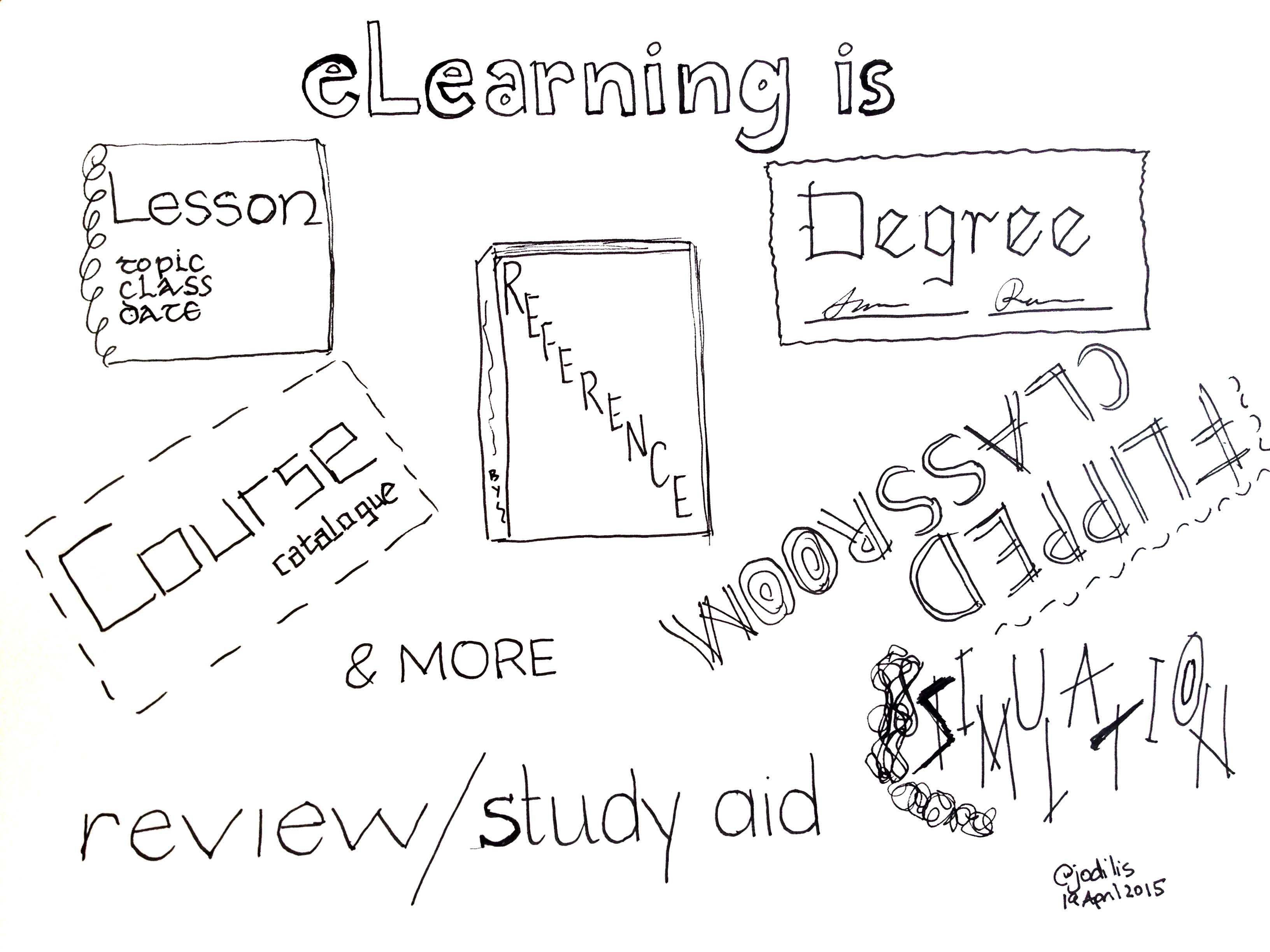 I participated in a workshop recently with subject matter experts. The workshop was on how to create an eLearning module.
I participated in a workshop recently with subject matter experts. The workshop was on how to create an eLearning module.
eLearning module may only be two words, but it caused a lot of confusion. For our project, we explained that we will use these modules as supplementary material. We said it a few times. Then at the end of the day, when we asked people to write down questions that they had, they posted responses like:
• Is eLearning mainly for procedures?
• Can eLearning be used like a library reference?
• eLearning is a supplement to traditional learning
eLearning is not one thing
People can get stuck in their heads that something is about one thing. We told them that the eLearning module was for supplementary material in this case, and that is all that they took away. However, we certainly did not want them to walk away from the training that eLearning is only for one thing. We explained to them that it could be many things: a lesson, a course, reference materials, simulation, review or study aid. It not one thing.
Ah-ha. They got that eLearning can be many things. They understood now that it is only in this project that we were using eLearning to create supplementary material.
Module? What’s that?
Module stumped a few people. Confusion stemmed from their understanding of a module is the main topic with sub-topics under the module. In our case, a module is equivalent to a lesson. It is lesson under one of the sub-topics. If we were to creating eLearning for the topic, we would have many eLearning modules.
Ah-ha. Different uses of the same word.
Two words: eLearning module. So many questions stemmed from two words.
Learning Activity or Teaching Methodology?
Another one was the word to describe the pedagogical methods using in teaching the lessons. We were using training and learning activities. Huh? Blank stares.
Eventually someone asked, “Is that different from teaching methodologies?”
“No, it isn’t.”
Teaching methodologies is what they use when they create their lesson plans.
We were working with subject matter experts. Most of them are educators. They understood completely the definitions and use of language in this scenario once we explained it. They made associations with what they already use. You could literally notice that thoughts and ideas processing in their minds happening throughout the week.
Language is Culture
We always talk about knowing our audience. Start with what they know. Language is culture. When teaching about eLearning, you need first to understand how they teach. What does their lesson plan template look like?
Even if the group that you are working with are not educators, they were students once. Everyone can remember what a lesson was like in a classroom. The base is there.
Think Different
I had everyone stand up in the classroom and asked them to cross their arms across their chests. Then I asked them to cross their arms across their chest the other way around. They had to think about which arm was under the other that they do out of habit. Can you do it? It’s uncomfortable. You have to think about it.
That is what eLearning is about. Educators have a habitual way of teaching based on the way that they assume students learn in the classroom. Now they have tweak their thinking of how their students learn in order to create eLearning modules.
To help them do that, define the terms and concepts you are using in eLearning in a way that they can associate it, add to or tweak what they already know. Maybe one day they will not to have to think so hard about how to reverse crossing their arms across their chest.